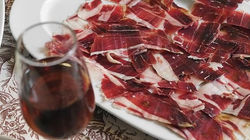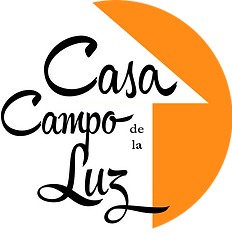Sevilla
Sevilla is the capital and largest city of Andalusia. It is situated on the plain of the River Guadalquivir. The inhabitants of the city are known as Sevillanos (feminine form: sevillanas) or hispalenses, after the Roman name of the city, Hispalis.
Its Old Town, the third largest in Europe with an area of 4 square kilometres, contains three UNESCO World Heritage Sites: the Alcázar palace complex, the Cathedral and the General Archive of the Indies. The Seville harbour, located about 80 kilometres from the Atlantic Ocean, is the only river port in Spain.
Seville was founded as the Roman city of Hispalis, and was known as Ishbiliya after the Muslim conquest in 712. During the Muslim rule in Spain, Seville came under the jurisdiction of the Caliphate of Córdoba before becoming the independent Taifa of Seville; later it was ruled by the Muslim Almoravids and the Almohads until finally being incorporated into the Christian Kingdom of Castile under Ferdinand III in 1248.
After the discovery of the Americas, Seville became one of the economic centres of the Spanish Empire as its port monopolised the trans-oceanic trade and the Casa de Contratación (House of Trade) wielded its power, opening a Golden Age of arts and literature. In 1519, Ferdinand Magellan departed from Seville for the first circumnavigation of the Earth. Coinciding with the Baroque period of European history, the 17th century in Seville represented the most brilliant flowering of the city's culture; then began a gradual economic and demographic decline as silting in the Guadalquivir forced the trade monopoly to relocate to the nearby port of Cádiz.
The Cathedral of St. Mary was built from 1401–1519 after the Reconquista on the former site of the city's mosque. It is among the largest of all medieval and Gothic cathedrals, in terms of both area and volume. The interior is the longest nave in Spain, and is lavishly decorated, with a large quantity of gold evident. La Giralda is a tower attached to the Cathedral that dates back to the twelfth century. It was originally built as part of a mosque when the Moors ruled in Spain and was later added onto by the Christians.
La Giralda gets its name from the weathervane attached to the very top of it, as "gira" means "turning one" in Spanish. The Alcázar facing the cathedral was developed from a previous Moorish Palace. Construction was started in 1181 and continued for over 500 years, mainly in the Mudéjar style, but also in the Renaissance style.
The Torre del Oro was built as a watchtower and defensive barrier on the river. A chain was strung through the water from the base of the tower to prevent boats from traveling into the river port.
The City Hall was built in the 16th century in high Plateresque style by master architect Diego de Riaño. The façade to Plaza Nueva was built in the 19th century in Neoclassical style. The Palace of San Telmo, formerly the University of Sailors, and later the Seminary, is now the seat for the Andalusian Autonomous Government. It is one of the most emblematic buildings of baroque architecture, mainly to its world-renowned churrigueresque principal façade and the impressive chapel.
The Royal Tobacco Factory is housed on the original site of the first tobacco factory in Europe, a vast 18th century building in Baroque style and the purported inspiration for the opera Carmen. The Metropol Parasol, in La Encarnación square, is the world's largest wooden structure. A monumental umbrella-like building designed by the German architect Jürgen Mayer, finished in 2011. This modern architecture structure houses the central market and an underground archaeological complex. The terrace roof is a city viewpoint.
The General Archive of the Indies, is the repository of extremely valuable archival documents
illustrating the history of the Spanish Empire in the Americas and the Philippines. The building itself,
an unusually serene and Italianate example of Spanish Renaissance architecture, was designed by
Juan de Herrera. The Plaza de España, in Maria Luisa Park (Parque de Maria Luisa), was built by the
architect Aníbal González for the 1929 Exposición Ibero-Americana. It is an outstanding example of
Regionalist Revival Architecture, a bizarre and loftily conceived mixture of diverse historic styles, such
as Art Deco and lavishly ornamented with typical glazed tiles.
The most important art collection of Seville is the Museum of Fine Arts of Seville. It was established in
1835 in the former Convent of La Merced. It holds many masterworks by Murillo, Pacheco, Zurbarán,
Valdés Leal, and others masters of the Baroque Sevillian School, containing also Flemish paintings of
the 15th and 16th centuries.
Other museums in Seville are:
-
The Archaeological Museum, which contains collections from the Tartessian and Roman periods,
placed in América square at María Luisa Park.
-
The Museum of Arts and Traditions, also in América square, in front of the Archaeological museum.
-
The Andalusian Contemporary Art Center, placed in La Cartuja.
-
The Naval Museum, housed in the Torre del Oro, next to the Guadalquivir river.
-
The Carriages Museum, in Los Remedios neighbourhood.
-
The Flamenco Art Museum The Bullfight Museum, in La Maestranza bullring
-
The Palace of the Countess of Lebrija, a private collection that contains many of the mosaic floors
discovered in the nearby Roman town of Italica.
-
The "Centro Velázquez" (Velázquez Center) located at the Old Priests Hospital in the Santa Cruz
neighbourhood.
-
The Antiquarium at Metropol Parasol, an underground museum that exhibits in situ Roman and
Muslim remains.
-
The Castillo de San Jorge (Castle of St. George) remains, below the Triana market, next to Isabel II
bridge. It was the last seat for the Spanish Inquisition.
-
The Museum and Treasure of La Macarena, where the collection of the Macarena brotherhood is
exhibited. This exhibition gives visitors an accurate impression about the Seville Holy Week.
-
La Casa de la Ciencia de Sevilla - Science Museum, opposite María Luisa Park.
Parks and gardens:
-
The Parque de María Luisa (María Luisa Park), is a monumental park built for the 1929 World's Fair held in Seville, the Exposición Ibero-Americana.
-
The so-called Jardines de las Delicias (literally, Delighting Gardens), closer to the river, are part of the Parque de María Luisa.
-
The Alcázar Gardens, within the grounds of the Alcázar palace, consist of several sectors developed in different historical styles.
-
The Gardens of Murillo and the Gardens of Catalina de Ribera, both along and outside the South wall of the Alcázar, lie next to the Santa Cruz quarter.
-
The Parque del Alamillo y San Jerónimo, the largest park in Andalusia, was originally built for Seville Expo '92 to reproduce the Andalusian native flora. It lines both Guadalquivir shores around the San Jerónimo meander. The impressive 32-meters-high bronze sculpture, "The Birth of a New Man" (popularly known as Columbus's Egg, el Huevo de Colón), by the Georgian sculptor Zurab Tsereteli, is located in its northwestern sector.
-
The American Garden, also completed for Expo '92, is in La Cartuja. It is a public botanical garden, with a representative collection of American plants donated by different countries on the occasion of the world exposition.
Fairs and Festivals:
-
The Semana Santa (Holy Week) and the Feria de Sevilla (Seville Fair), also known as Feria de Abril (April Fair), are the two most well-known of Seville's festivals. Seville is internationally renowned for the solemn but decorative processions during Holy Week and the colourful and lively fair held two weeks after. During the Feria, families, businesses and organisations set up casetas (marquees) in which they spend the week dancing, drinking, and socialising. Traditionally, women wear elaborate flamenco dresses and men dress in their best suits. The marquees are set up on a permanent fairground in the district of Los Remedios, in which each street is named after a famous bullfighter.
Tapas & Oranges:
-
The tapas scene is one of the main cultural attractions of the city: people go from one bar to another, enjoying small dishes called tapas (literally "lids" or "covers" in Spanish, referring to their probable origin as snacks served on small plates used to cover drinks).
-
Local specialities include fried and grilled seafood (including squid, choco (cuttlefish), swordfish, marinated dogfish, and ortiguillas), grilled and stewed meat, spinach with chickpeas, Jamón ibérico, lamb kidneys in sherry sauce, snails, caldo de puchero, and gazpacho.
-
A sandwich known as a serranito is the typical and popular version of fast food. Typical desserts from Seville include pestiños, a honey-coated sweet fritter; torrijas, fried slices of bread with honey; roscos fritos, deep-fried sugar-coated ring doughnuts; magdalenas or fairy cakes; yemas de San Leandro, which provide the city's convents with a source of revenue; and tortas de aceite, a thin sugar-coated cake made with olive oil.
-
Polvorones and mantecados are traditional Christmas products, whereas pestiños and torrijas are typically consumed during the Holy Week.
-
Bitter Seville oranges grow on trees lining the city streets. Formerly, large quantities were collected and exported to Britain to be used in marmalade. Today the fruit is used predominantly as compost locally, rather than as a foodstuff. According to legend, the Arabs brought the bitter orange to Seville from East Asia via Iraq around the 10th century to beautify and perfume their patios and gardens, as well as to provide shade. The flowers of the tree are a source of neroli oil, commonly used in perfumery and in skin lotions for massage.





 |  |
|---|---|
 |  |
 |  |
 700px-Paisaje_de_España.JPG |  |
Know your dates? Have a question? Want or need more information? Drop us a line and we'll get back to you.
Contact Us
Casa Campo de la Luz
Eco Holiday Houses on the Costa de la Luz
Ctra. Vejer / San Ambrosio
Vejer de la Frontera, Cadiz, 11150
Andalucia, Spain
Tel: +34 66 667 1995
Or find us & connect via social media:




